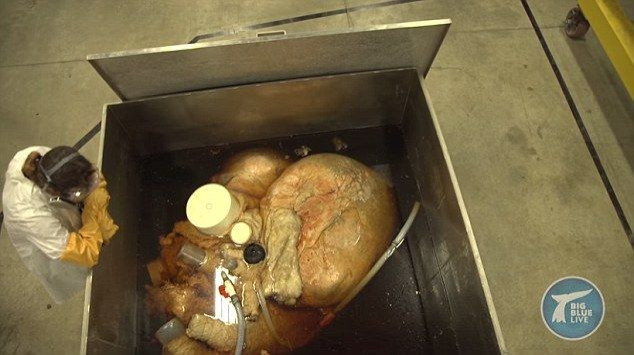Experts preserve a 400-pound heart: world’s largest heart

People could soon see the largest heart on Earth as scientists have conducted the initial process to preserve a 400-pound heart of a blue whale. Scientists have retrieved the heart after a carcass of the largest mammal washed ashore in Canada in May 2014.
Experts from the Royal Ontario Museum, or ROM, dissected the 76.5 feet or 23.3-metre blue whale in the shore of Newfoundland in Canada. The incident was the first time scientists got to see the heart of the largest animal, as before, intact specimens are difficult to find, experts said.
The whale was believed to have died after being trapped in ice. Tales about the heart of whales say it could be as big as a car, with the aorta large enough for a human to swim through. But one of the experts, Jacqueline Miller, a mammalogy technician from the ROM, said the heart was only the size of approximately a small golf car or a circus bumper.
"I was expecting something the size of a car, but found a heart more like the size of maybe a small golf cart or circus bumper car for two," Miller said. The aorta was also found only capable of fitting a human head inside.
In July, Miller and her colleagues removed the heart from the ice chamber after being frozen for over a year, to begin long-term preservation. According to Miller, the blue whale heart they retrieved is the first anatomically preserved for exhibit and study.
“People are always curious how big it is, and if it is the same as our heart, structurally," Miller said in a PBS video. The heart weighed over 181 kilogrammes and is about 5 feet or 1.5 metres long, which took four people to push the heart through a hole to retrieve it from the blue whale’s chest.
To date, blue whales are considered endangered, with population no more than 12,000. When blue whales die, the bodies usually sink to the seafloor, which leads the biologists to rarely get a chance to study its internal anatomy.
"Anatomically, not a lot has been published about the blue whale heart. We'd also like to have an answer for our visitors when they ask 'how big is it'?" Miller said.
The scientists took five days to get the giant organ out of the freezer where it was being preserved. The numerous arteries of the heart were plugged up, and a total of about 1,000 gallons (3,785 litres) of formaldehyde were pumped throughout the heart.
After one week, the heart will be removed from its formaldehyde bath, will be dehydrated with acetone, and slowly filled with silicone. The heart will be fully preserved after the silicone has hardened.
After the process, the blue whale heart will be ready for display at the ROM, Miller said. The skeleton of the animal will also be placed at the museum together with the heart.
Contact the writer at feedback@ibtimes.com.au or tell us what you think below





















